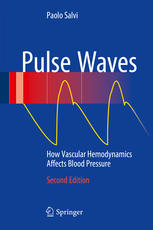امواج نبض: نحوه تاثیر همودینامیک عروقی بر فشار خون ۲۰۱۶
Pulse Waves: How Vascular Hemodynamics Affects Blood Pressure 2016
دانلود کتاب امواج نبض: نحوه تاثیر همودینامیک عروقی بر فشار خون ۲۰۱۶ (Pulse Waves: How Vascular Hemodynamics Affects Blood Pressure 2016) با لینک مستقیم و فرمت pdf (پی دی اف)
| نویسنده |
Paolo Salvi |
|---|
| تعداد صفحهها |
217 |
|---|---|
| نوع فایل |
|
| حجم |
16 Mb |
| سال انتشار |
2016 |
89,000 تومان
معرفی کتاب امواج نبض: نحوه تاثیر همودینامیک عروقی بر فشار خون ۲۰۱۶
این نسخه جدید، اصلاح شده و به روز شده آخرین پیشرفت ها در درک پاتوفیزیولوژی انسانی را در نظر می گیرد. این کتاب اصول پیچیده اساسی همودینامیک عروقی و پاتوفیزیولوژی را به روشی مستقیم و مؤثر ارائه می کند و بر اهمیت خواص مکانیکی شریان های بزرگ در منشاء فشار خون تأکید می کند. متن آسان برای درک، که توسط تصاویر مفید پشتیبانی می شود، عناصر تعیین کننده فشار خون را توصیف می کند و مفاهیم مهمی مانند سرعت موج پالس، فشار خون مرکزی، امواج منعکس شده، و تقویت فشار پالس را توضیح می دهد. فصل های کاملاً جدیدی در مورد سیستم عصبی سمپاتیک، سفتی شریانی و نقش آترواسکلروز در تأثیرگذاری بر تغییرات فشار خون گنجانده شده است. این کتاب پزشک را قادر می سازد تا به برخی از سؤالات اصلی که هنگام پرداختن به مشکل فشار خون شریانی در عمل بالینی روزانه با آن مواجه می شود پاسخ دهد: فشار خون چگونه ایجاد می شود؟ چگونه باید مقادیر فشار خون را تفسیر کرد؟ آیا فشار خون سیستولیک مهمتر از فشار خون دیاستولیک است؟



